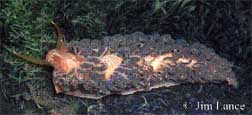Neapolitan Spurilla (Spurilla neapolitana)
By Shaunte Henry
and
James B. Wood and Abel Valdivia (Eds)
and
James B. Wood and Abel Valdivia (Eds)
|
Neapolitan Spurilla (Spurilla neapolitana)
By Shaunte Henry
and James B. Wood and Abel Valdivia (Eds) |
